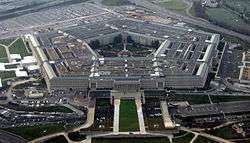Beijing–Washington hotline


On 5 November 2007 China and the United States announced that they will set up a military hotline between Beijing and Washington D.C. to avoid misunderstanding during any moments of crisis in the Pacific.[1][2]
On this day Defense Secretary Robert M. Gates told reporters that he and Chinese Defense Minister Cao Gangchuan formally agreed to set up the dedicated 24-hour phone line in Beijing.[1]
According to a report China's Defense Ministry long resisted the idea of such a direct line until June 2007 when General Zhang Qinsheng stated that China was ready to proceed with the establishment at the Shangri-La Dialogue security conference in Singapore.[1][3]
According to the Chinese Defense Ministry China and the United States officially signed an agreement on setting up a military hotline between the two defense departments in Shanghai on February 2008 after a working meeting between the two defense departments.[4]
The hotline was set up on 10 April 2008.[5]
Earlier in March 2007 Chairman of the Joint Chiefs of Staff Peter Pace announced that Beijing and Washington were considering an emergency hotline between leaders of the US and China during a visit in China.[6][7]
Discussions on such a hotline have been going on since a meeting between China's paramount leader Hu Jintao and US President George W. Bush in April 2006.[2][8]
An April 2013 report notes that the telephone line between the PLA and the US military is far from the hotline established between Washington and Moscow after the Cuban missile crisis. It says that the 2008 agreement with China merely arranges a call to be put through to the Zhongnanhai telecommunications directorate, which has discretion on whether to forward the call to the foreign affairs section of the Department of Defence or the PLA's command headquarters in West Beijing. Furthermore, it states that in protest against US actions the Chinese have cut off the hotline twice for extensive periods at times when it might be needed most.[9]
In September 2015 Chinese leader Xi Jinping and US President Barack Obama announced agreements on a military hotline to reduce the risks of miscalculations between the militaries.[10][11]
Space hotline
In November 2015 the US and China set up a so-called space hotline allowing both nations to easily share information about activities in space and help their space and military agencies to discuss "potential collisions, approaches, or tests" to prevent misunderstanding or miscommunication from escalating to a dangerous situation.[12][13] According to US assistant secretary Frank Rose an urgent safety mechanism was required due to the growing amount of potentially lethal space debris in orbit, as well as numerous undisclosed military satellite launches.[12] The link was established amid tensions due to China ramping up tests of weapons designed to target the orbital networks upon which almost all US high-tech military capabilities depend.[12]
Cyber hotline
In November 2011 an editorial in China Daily called for closer communication especially in cases of an emergency concerning matters of cyberwarfare.[14][15] This has been referred to as a call for a Sino-American cyber "red phone".[16]
See also
References
- 1 2 3 Cody, Edward (6 November 2007). "China and U.S. To Establish Military Hotline". The Washington Post. Retrieved 11 February 2017.
- 1 2 "Sino-US deal on military hotline inked". China Daily. Retrieved 11 February 2017.
- ↑ "China plans military hotline with US". China Daily. Retrieved 11 February 2017.
- ↑ "China, U.S. sign agreement on setting up military hotline". Retrieved 11 February 2017.
- ↑ Guo, Sujian; Guo, Baogang. Thirty Years of China - U.S. Relations: Analytical Approaches and Contemporary Issues. Lexington Books. ISBN 9781461662631. Retrieved 11 February 2017.
- ↑ Schott, Ben. Schott's Miscellany 2008: An Almanac. Bloomsbury USA. ISBN 9781596913820. Retrieved 11 February 2017.
- ↑ "Pace: China-US hotline to help build trust". China Daily. Retrieved 11 February 2017.
- ↑ Hao, Yufan. Sino-American Relations: Challenges Ahead. Routledge. ISBN 9781317054818. Retrieved 11 February 2017.
- ↑ Garnaut, John. "We value your call: US and China test hotline". The Sydney Morning Herald. Retrieved 11 February 2017.
- ↑ "U.S., China agree on rules for air-to-air military encounters". Reuters. Retrieved 11 February 2017.
- ↑ "US, China agree to establish military hotline, rules for air-to-air encounters". Taipai Times. Retrieved 11 February 2017.
- 1 2 3 "US and China set up 'space hotline'". Financial Times. Retrieved 11 February 2017.
- ↑ D'Orazio, Dante (22 November 2015). "The US and China now have a 'space hotline' to avoid satellite warfare". The Verge. Retrieved 11 February 2017.
- ↑ "Cyber cooperation needed". China Daily. Retrieved 11 February 2017.
- ↑ Diplomat, Adam Segal, The. "US-China Cyber Hotline?". The Diplomat. Retrieved 11 February 2017.
- ↑ "China Daily: There Should Be a Beijing-Washington Hotline to Avoid Cyber-Misunderstandings". Popular Science. Retrieved 11 February 2017.